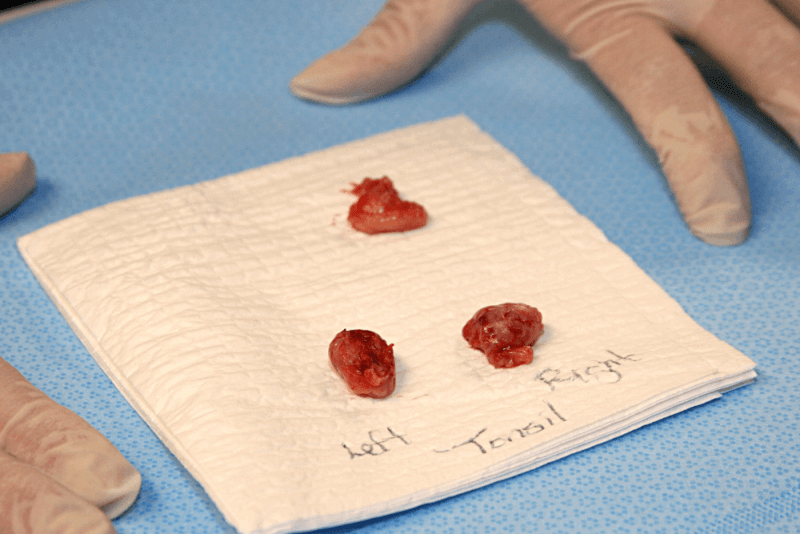It is a lymphoid in the nasal region at the back of the nasal cavity where lymphocytes, one of the most important elements of our immune system, function. Although having adenoids is perceived as a bad event in society, it is actually not an abnormal situation. Every healthy person has adenoids. The biggest task of the adenoid is a very important defense organ that helps the harmful substances that can enter the human body in our respiratory system to be kept and destroyed here. At the same time, adenoid can grow in some conditions or disorders. The occurrence of this situation first causes our respiratory system not to work properly and serious diseases to occur.
How Does Adenoid Grow?
The adenoid plays a very important role especially in removing viral infections from the body. In the cavity of our nose and mouth there are 6 lymphoid tissues with almost identical characteristics. And these tissues prevent foreign substances and microbes from entering our bodies. The but tissues that enable the formation of the waldeyer’s ring, which includes the adenoid, can grow while showing immunity against substances and companies that enter our body. Along with this growth, it can also bring infection. It happens in every individual after birth, the adenoid grows until the age of 5, then starts to shrink at the age of 7, and becomes quite small in adulthood.
In Which Age Groups Does Adenoid Enlarge More?
Adenoids, especially in young children, develop viral infections due to external factors and grow quite large. In some rare cases, adenoids and tonsils, especially adenoids and tonsils, also develop as congenitally large. At the same time, in people who are open to allergic constitution, it grows due to some reactions and may even remain this way.
In Which Cases Does Adenoid Require Treatment?
During adenoid enlargement In the body, if it damages the respiratory system and narrows our airways and various complaints occur due to this, it requires treatment. At the same time, the biggest cover for the fact that adenoids do not require treatment is to determine the extent to which adenoids harm people. At the same time, it is also checked whether the adenoid will shrink without treatment and treatment should be started in this way. At the same time, adenoid treatment is always treated without the need for surgical intervention.
Causes Of Adenoid Enlargement
Since the tissue we call adenoids is part of a cycle that is responsible for protecting our immune system, the growth of adenoids is caused by conditions that activate our cells in this system. Infections can cause adenoid enlargement. Since the adenoid acts as an immune response, it causes growth. At the same time, we see that people whose body is allergic have enlarged adenoids as a result of some allergic reactions. If this condition is seen in first-degree relatives, adenoid enlargement is also quite common in these people due to genetics. People who smoke or inhale polluted air may also develop adenoid enlargement as a result of the reaction. Tumors that occur in the areas where the adenoid is located cause adenoid enlargement.
Symptoms Of Adenoid Enlargement
Adenoid enlargement usually occurs as a result of complaints that will cause narrowing of the adenoid, which is located in the cavity of our nose and the area between the mouth and larynx. The first symptom of adenoid enlargement is experiencing too much nasal congestion. If there is frequent discharge from the nose and nasal passages, it is very likely to be caused by adenoid enlargement. However, in people who experience pain, congestion or hearing complaints in the ear, these complaints may be caused by enlarged adenoids. Snoring while sleeping at night or sleeping with the mouth open are among the symptoms of adenoid enlargement. The enlargement of adenoids also causes pain and swelling in the throat.
Treatments For Adenoid Enlargement
In the treatment of adenoid enlargement, the treatment starts with determining the discomfort that will cause the treatment in the first place. After the necessary intervention is made to the patient, the appropriate treatment method is determined. In young children, adenoid enlargement may be caused by viral infections, so follow-up is usually taken instead of surgical intervention. If, as a result of the observations made, it has spontaneously returned to its former state with the end of the infection, no treatment or surgical intervention is required. In people who are exposed to extremely unfavorable conditions due to adenoid enlargement, nasal sprays may be given to the patient as a priority. Then, with these sprays, the patient’s nasal flesh is aimed to shrink, and in patients whose drug treatment does not work, adenoid removal is usually performed with a surgical intervention. Adenoid removal is usually performed in critical cases and in people with chronic breathing problems. At the same time, adenoid removal is also performed in people who have problems with nutrition or speech. Adenoid removal is also performed in people who have any cancer in the adenoid.
In Which Cases Is Adenoid Surgery Performed?
Adenoid surgery is usually an operation that should be performed in very risky situations. This surgery requires very demanding conditions to be performed. Adenoid surgery is performed especially in people who have difficulty in getting a voice. However, adenoiditis, which is frequently encountered, is a condition that requires surgery. If there is a condition we call sleep apnea, adenoid surgery is required. At the same time, if adenoid causes speech disorder and breathing problems, it also requires surgery. If adenoiditis in children causes inflammation in the ear and similar conditions, surgery should be performed in the same way. If the doctor has not achieved positive results after treatment with medication, a preliminary surgery is necessary. It needs to be operated on in the same way as it blocks our air channels in our body and harms us in terms of breathing.
How Is Nasal Surgery Performed?
Nasal surgery is usually performed by anesthesia with anesthesia in young individuals. The operation takes about 20 minutes. When adenoid surgery is performed, adenoid is removed through the mouth without opening any hole on the types. The operation is performed in a very short and fast way. If there are any symptoms and encounters after the operation, the patient is operated on again.
Recovery After Adenoid Surgery
Since the patient’s surgery is quite short and is performed through the mouth, the reunion process takes about one or two days. In children, it takes approximately 3 to 5 days. In older people, if tonsillectomy is performed together with the tonsil surgery, the recovery period is prolonged up to 10 days. Since it is a very simple surgical procedure, the recovery period is also very long. If the patient pays attention to what he/she eats and drinks after the surgery and follows all the doctor’s instructions until full recovery is achieved, a very rapid recovery is observed. It is also important to make adequate and correct use of a tree given by the doctor after surgery. When these points are taken into consideration, a rapid recovery process is observed in the patient.











